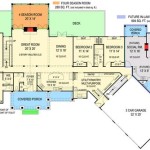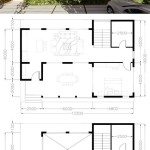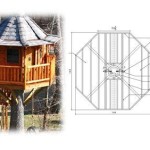Duck House Plans DIY: Building a Safe and Comfortable Home for Your Ducks
Ducks are delightful and engaging companions, adding a touch of charm and vibrancy to any backyard. However, providing them with a safe and comfortable dwelling is crucial for their well-being. A well-constructed duck house is essential for shelter, warmth, and a sense of security. This article will guide you through the process of building a duck house from scratch, offering DIY plans and essential considerations for creating a sanctuary for your feathered friends.
Choosing the Right Location and Materials
The first step in building a duck house is selecting the ideal location and materials. Consider the following factors:
- Sunlight: Ducks need ample sunlight for warmth and vitamin D production. Choose a location that receives at least six hours of sunlight daily.
- Drainage: The duck house should be located on a well-drained area to prevent waterlogging and dampness. A slightly elevated position is ideal.
- Protection: Choose a location that offers shelter from wind, rain, and predators. A fenced-in area with dense vegetation provides additional protection.
- Accessibility: The duck house should be easily accessible for cleaning and maintenance.
- Materials: Wood is a common choice for duck houses due to its natural insulation and durability. Cedar or redwood are resilient options that resist rot and insect infestations. Treated lumber is also suitable, but ensure it is free of harmful chemicals.
Essential Duck House Features
A well-designed duck house includes key features that promote the ducks' comfort and safety:
- Roof: The roof should be sloped to allow for proper drainage and prevent leaks. A durable material such as shingles or metal roofing is recommended.
- Floor: The floor should be raised slightly off the ground to prevent dampness and provide ventilation. A solid plywood or treated lumber base is a good option.
- Nest Boxes: Ducks require nesting boxes for laying eggs. The ideal size is approximately 12 inches wide x 12 inches deep x 18 inches high. Include nesting material such as straw or wood shavings.
- Ventilation: Adequate ventilation is crucial to prevent moisture buildup and maintain air circulation. Include vents on the sides or roof of the house.
- Entrance: The entrance should be large enough for the ducks to easily enter and exit. A ramp leading to the entrance can be added for easier access.
Duck House Construction Steps
Once you have gathered the necessary materials and chosen the location, you can begin construction. Here are the general steps involved:
- Foundation: Begin by constructing a solid foundation for the duck house. This can be a simple wooden frame or a concrete slab.
- Walls: Build the walls using the chosen wood. Ensure that the walls are tall enough to provide adequate headroom for your ducks. Use a level to ensure that the walls are plumb and square.
- Roof: Construct the roof frame and attach the roofing material. Ensure that the roof slopes sufficiently to facilitate drainage.
- Nest Boxes: Install the nest boxes inside the duck house. Use screws or nails to secure them to the walls.
- Ventilation: Cut out ventilation openings on the sides or roof of the house. Use wire mesh or chicken wire to cover the openings.
- Entrance: Cut out an entrance large enough for the ducks to easily enter and exit. Consider adding a protective overhang above the entrance to provide shelter from rain.
- Finishing Touches: Paint or stain the duck house to protect the wood and enhance its appearance.
Additional Considerations
It's important to consider a few additional details to make your duck house more comfortable and functional:
- Predator Protection: If predators are a concern in your area, install a wire mesh around the house to prevent access.
- Cleaning: Ensure that the duck house is easily cleanable. To facilitate cleaning, consider using removable nesting boxes and a solid floor that can be easily swept.
- Temperature Control: In colder climates, consider adding insulation to the walls and roof to maintain warmth during the winter months.
- Water Source: Provide a clean and accessible source of water for the ducks near their house. A water dish, fountain, or pool is recommended.
Building a DIY duck house is a rewarding experience, offering a sense of accomplishment and the satisfaction of providing a comfortable and safe home for your feathered friends. By following these plans and considering the essential features, you can create a sanctuary for your ducks, enhancing their well-being and enriching their lives.

Duck House Plans Howtospecialist How To Build Step By Diy

37 Free Diy Duck House Coop Plans Ideas That You Can Easily Build A Frame En Designs

37 Free Diy Duck House Coop Plans Ideas That You Can Easily Build Ens Backyard Ducks

23 Duck House Plans With Tutorials That You Can Build In A Weekend The Poultry Guide

37 Free Diy Duck House Coop Plans Ideas That You Can Easily Build Building A Shed Roof

Duck Coop Plans Myoutdoorplans

Duck Coop Plans Myoutdoorplans

Duck House Roof Plans Howtospecialist How To Build Step By Diy

How To Make A Duck House The Cape Coop

A Diy En Or Duck House








